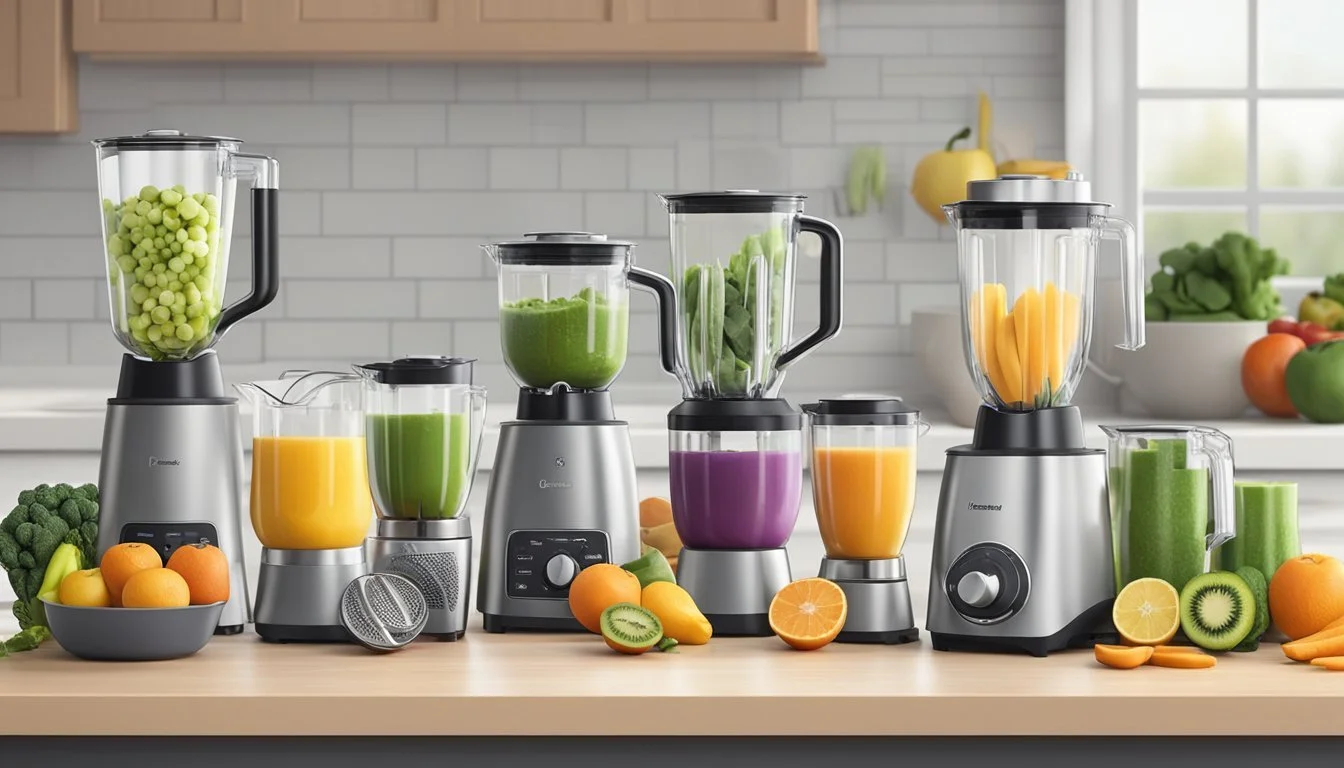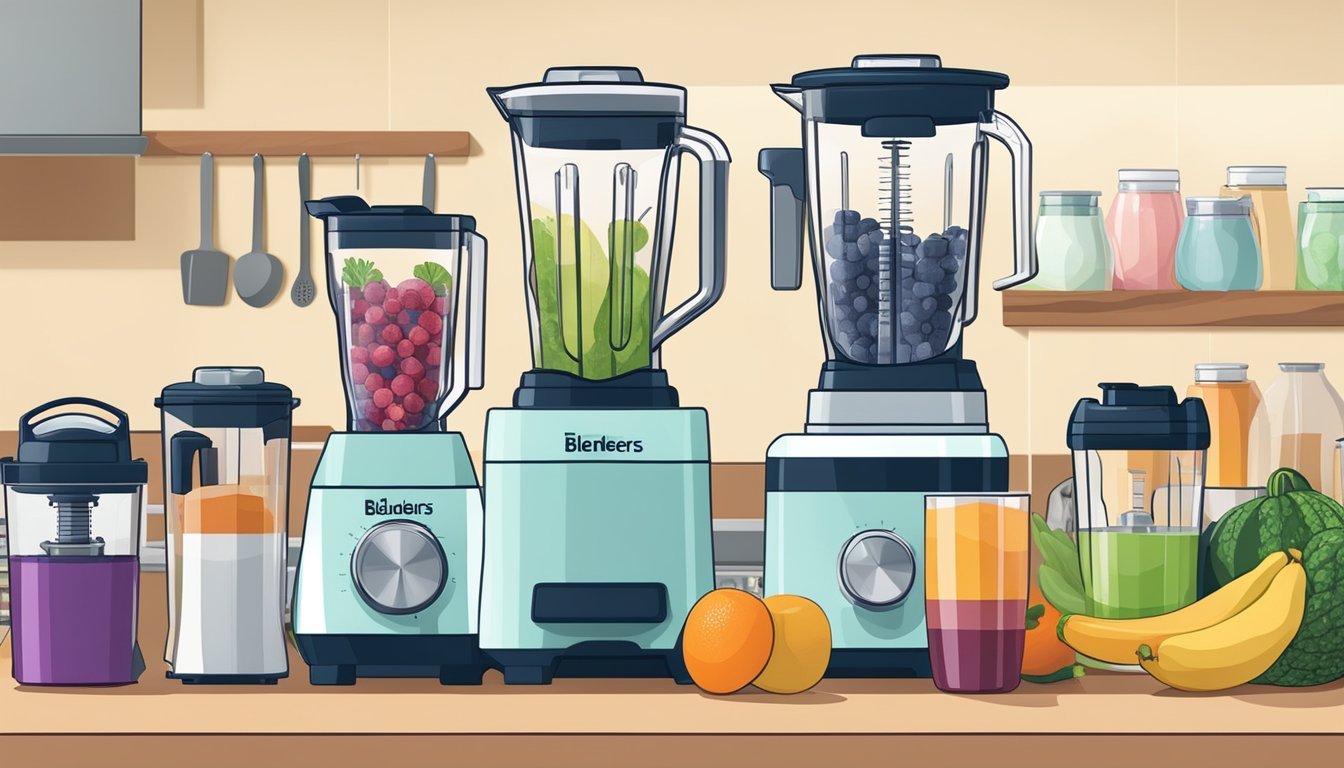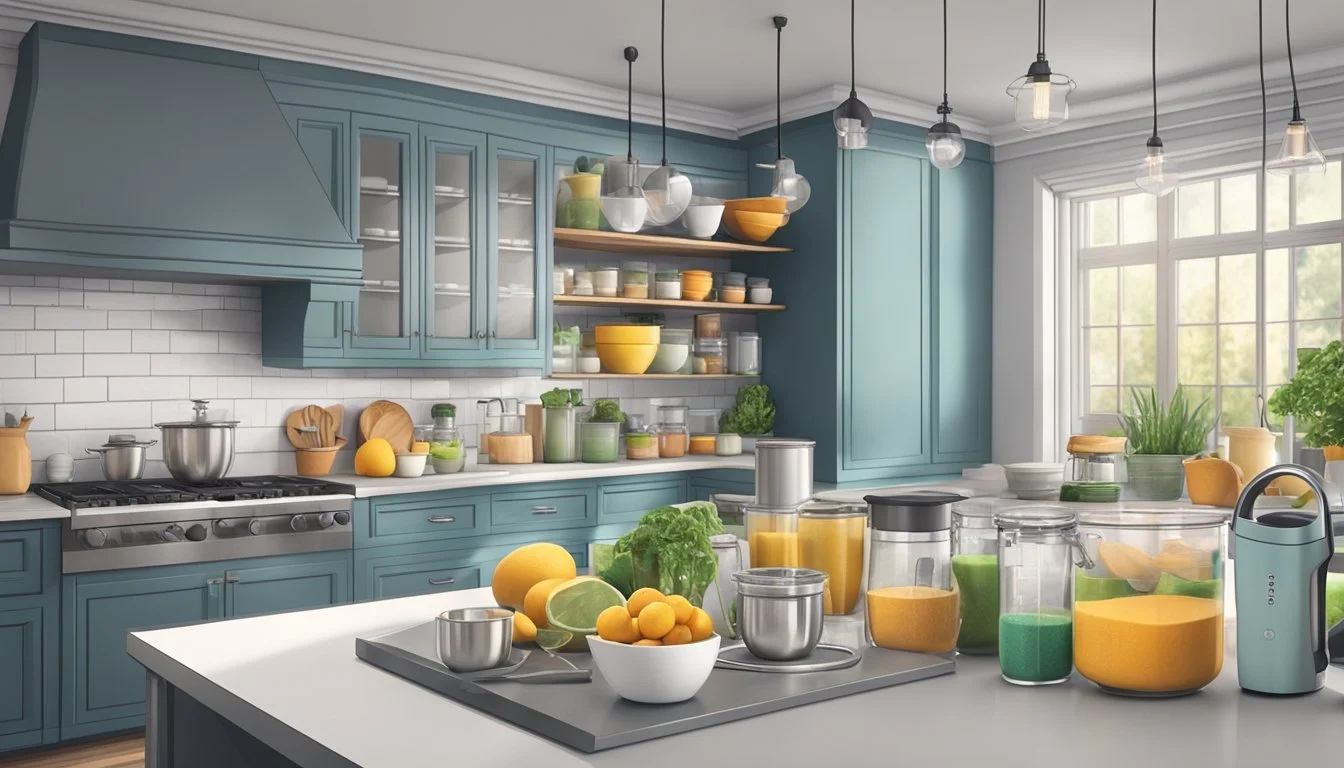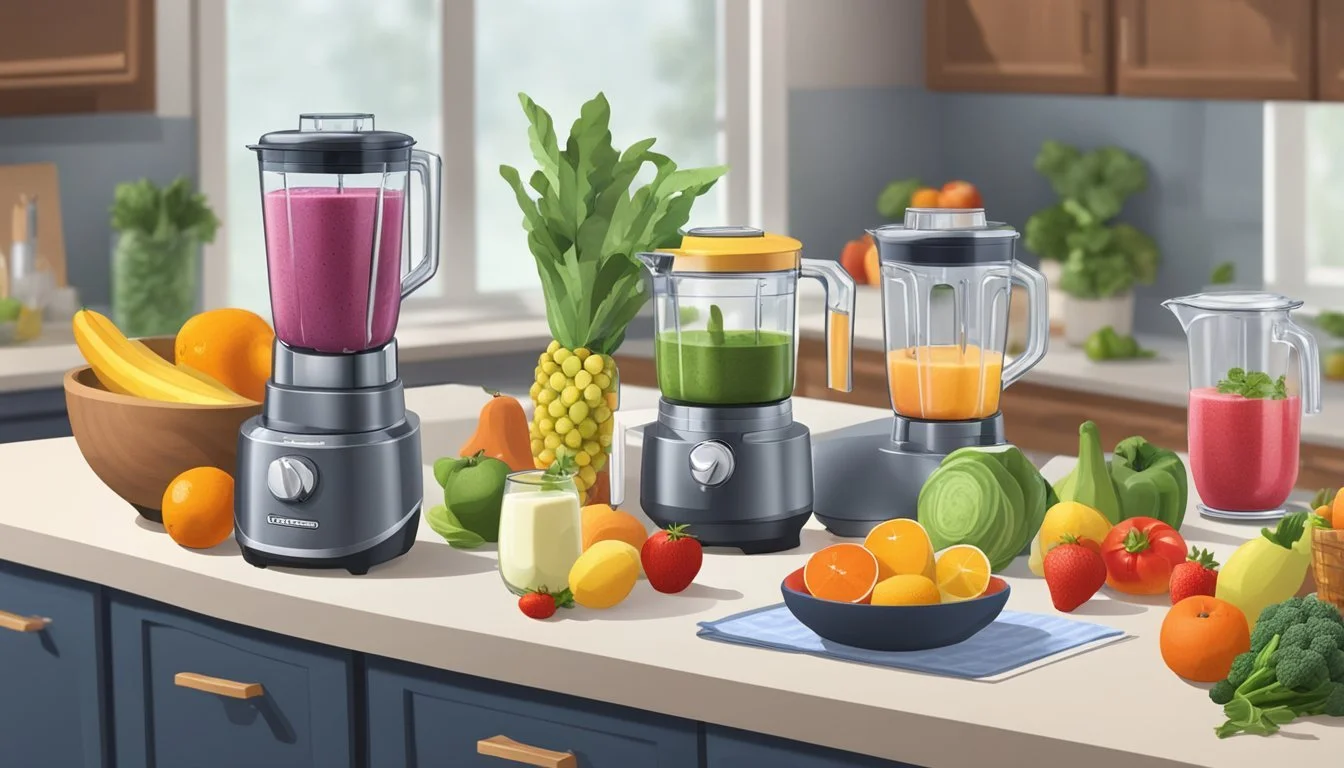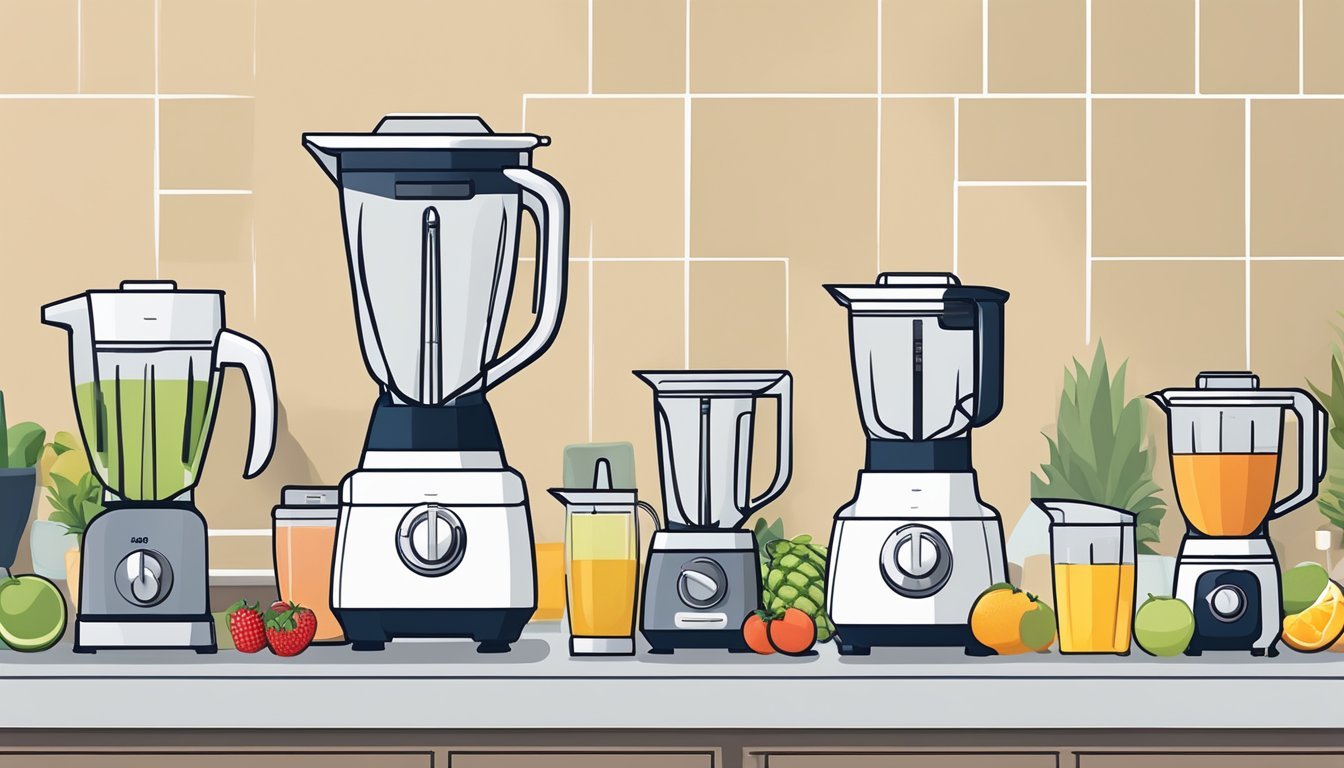How to Choose the Best Blender
Selecting the Perfect Mix of Power and Features for Your Kitchen Needs
Selecting the right blender is an essential task for anyone looking to mix up everything from smoothies to soups with ease. With a multitude of models on the market, each boasting various features and capabilities, understanding one's own culinary needs is a critical first step. A high-quality blender should not only meet the power requirements for the intended tasks but also fit within an individual's budget. The best blenders provide a combination of power, versatility, and durability, ensuring they can handle everything from frozen fruit to nuts and seeds without faltering.
It's also important to consider the design and ease of cleaning when choosing a blender. Some units offer dishwasher-safe parts for convenience, while others are designed with self-cleaning features. Power is another factor to weigh, with some blenders offering upwards of 700 watts for intensive tasks. For those requiring a blender for simple tasks, less powerful and more affordable options may be sufficient.
Ultimately, one's choice in a blender should align with their specific needs and lifestyle. Whether prioritizing power, price, or specific features like blending hot ingredients, the range of available options means there is a blender to suit every kitchen. Identifying individual blending needs directs consumers to a selection of blenders that are not only efficient and effective but also tailored to enhance their daily routine.
Understanding Blender Types
When selecting the ideal blender, consumers are faced with a comprehensive array of types, each boasting specific features tailored to different blending tasks. This section explores the most prevalent blender categories.
Countertop Blenders
Countertop blenders are the traditional, versatile kitchen appliance suited for a variety of tasks from pureeing soups to crushing ice. They generally offer a range of power options, typically starting from 500 watts for basic models, to over 1000 watts for high-performance units such as the Vitamix or Breville blenders. The size of countertop blenders can vary, with capacities ranging from about 47 ounces to upwards of 70 ounces, accommodating single servings to meals for larger groups.
Speed and Controls: Most will feature anywhere from 3 to 10 speed settings, with additional functions like a pulse button to give users better control over the consistency of the blend.
Versatility: Premium blenders from brands like KitchenAid or Vitamix often combine blender and food processor functions, with various attachments and settings to handle tasks beyond just blending.
Immersion Blenders
Immersion blenders, also known as stick or hand blenders, offer direct blending within a pot or bowl, making them ideal for tasks like emulsifying sauces or pureeing soups right on the stove. They are typically more portable and easier to clean than their countertop counterparts and come with different attachments for increased functionality.
Size and Power: They are smaller, yet still capable of powerful performance, with high-quality models capable of competing with standard countertop blenders.
Controls: Speed settings on immersion blenders range from simple one-touch buttons to adjustable dials, allowing for precise control while blending.
Key Features to Consider
When selecting the ideal blender, the key factors include power, speed, blade design, container materials, ease of use, cleaning, and additional features that enhance functionality.
Power and Speed
The motor's wattage indicates the blender’s power, with 500 watts generally being sufficient for standard tasks such as making smoothies. However, higher power is necessary to effectively crush ice and handle more strenuous blending tasks. Blenders should offer variable speed controls, ideally with a dial for precision, and a pulse function for bursts of power which contribute to the consistency of the blend.
Blade Design and Performance
The blade's quality and design are crucial for performance. Stainless steel blades are preferred for their durability and ability to maintain sharpness. For optimal results, the blades should be designed to create a consistent vortex, pulling ingredients downwards to ensure even blending and consistency.
Container Materials and Design
Blender jars or containers can be made from glass or plastic. Glass blenders are heavier, more stable, and do not absorb food odors or stains, but can be more fragile. Plastic jars are lightweight and less likely to break, with some being BPA-free. Capacity is important to match the user's needs, with larger containers allowing more voluminous blends.
Ease of Use and Cleaning
An easy-to-use blender has intuitive controls, such as buttons or toggles, clearly labeled with their functions. For cleaning convenience, look for a blender that is dishwasher-safe, indicating that the parts can be disassembled and cleaned in a dishwasher without damage.
Additional Functions and Accessories
Additional functions and accessories, like a tamper, can enhance the blender's versatility. Look for presets for common tasks like ice crush, blending smoothies, or creating soups. Some blenders come with additional attachments and accessories to facilitate a range of culinary tasks beyond mere blending.
Performance for Specific Tasks
Choosing the best blender for specific tasks means understanding each blender's capabilities in relation to the desired outcome, whether that's a smooth texture for liquids or the right speed for tough ingredients.
Making Smoothies and Juices
For smoothies and juices, blenders should offer a high-speed setting that can blend fruits and vegetables to a smooth consistency. A model with a pulse function can handle chunkier blends and provide better control. Personal blenders are often suitable for this task, especially when serving size is for one or two people.
Crushing Ice and Frozen Desserts
Consumers seeking to crush ice or make frozen desserts should look for a blender with ice-crushing capabilities. These machines tend to have strong, durable blades and a powerful motor to turn ice into snow-like consistency without damaging the appliance.
Pureeing Soups and Sauces
To puree soups and sauces, consistency and smoothness are key. A high-performance blender should be able to puree hot ingredients evenly, without leaving chunks. The ability to start at a slow speed and increase gradually can help achieve a velvety texture without splattering.
Food Processing Capabilities
Some blenders also come with food processing capabilities, able to chop, grind, and grate. Those that do should have interchangeable blades and a pulse option, broadening their versatility to handle recipes for salsa or pizza dough.
Baking and Dough Preparation
When it comes to baking and dough preparation, blenders that can stir, whip, and blend dry and wet ingredients will stand out. Look for models that accommodate dough-making, with settings that mimic kneading, preventing overheating while achieving the desired dough consistency.
Price and Budget Considerations
When selecting a blender, the price can reflect not only the unit’s features but also its durability and performance. Buyers should consider how much they are willing to invest and how the blender's cost aligns with their usage needs and expectations.
Budget-Friendly Options
For individuals seeking value without compromising on quality, budget blenders stand out as a savvy choice. Options such as the Hamilton Beach 58148A, priced at around $35, prove that affordability does not necessarily mean poor performance. These models are typically suitable for basic blending tasks and offer sufficient functionality for those with modest needs.
Premium Blenders and Features
On the higher end of the spectrum, premium blenders like Breville The Super Q provide advanced features, more powerful motors, and superior build quality. A premium blender can be a significant investment, with some costing over $600. However, they often justify their price with capabilities extending beyond simple blending, such as heating soups or processing nuts into butter, catering to a more demanding culinary enthusiast.
Warranty and Longevity
A long-term investment in a premium blender is sometimes backed by extensive warranties, such as a 10-year warranty, which can be indicative of the manufacturer's confidence in its product's durability. Consumers should understand that a higher initial price might offer better long-term value due to such enhanced warranty terms and the potential for a longer life-span of the appliance.
Blender Reviews and Testing
Selecting the best blender involves a careful look at reviews and testing results to ensure performance and user satisfaction. This section dives into the insights gathered from expert reviews, consumer feedback, and hands-on performance testing.
Expert Blender Reviews
Experts have tested various blenders for their ability to perform tasks ranging from crushing ice to pureeing ingredients. The A3500 by Vitamix and Breville The Super Q often receive high marks for their power and versatility. Experts appreciate the A3500 for its variable speed control and durability, while Breville's Super Q is noted for its high-powered motor and noise suppression technology, suggesting a focus on user experience and consistent results.
Consumer Feedback
Consumer reports and reviews provide real-life insights into blender performance and longevity. Buyers often emphasize the importance of reliability and consistent results in their day-to-day use. Feedback on models like the A3500 tends to highlight its user-friendly interface and blending consistency, while users of the Super Q may praise its robust construction and efficient blending capabilities.
Performance Testing Results
Performance tests commonly rate blenders on criteria such as smoothness of smoothies, ice crushing ability, and ease of cleaning. In testing environments, blenders like the A3500 and Super Q demonstrate their strengths with high scores in blending a range of ingredients, from tough nuts and seeds to softer fruits and greens. Test results often point to a correlation between wattage and blending efficiency, with both models excelling in this regard.
Additional Uses and Recipes
Blenders are versatile kitchen tools capable of transforming ingredients into a variety of creative preparations beyond simple smoothies. They can concoct a range of recipes from beverages to spreads that cater to different dietary needs and preferences.
Mixing Cocktails and Dips
Cocktails: Blenders enable one to effortlessly mix up refreshing cocktails like margaritas and daiquiris with a smooth, slushy consistency. A powerful blender can crush ice to the perfect size for chilling drinks without watering them down.
Dips: For parties or healthy snacking, blenders can puree ingredients to create creamy dips such as salsa, guacamole, or spinach and artichoke dip (What wine goes well with spinach and artichoke dip?).
Creating Nut Butters and Powders
Making nut butters at home is simple with a high-performance blender. One can turn roast nuts, like almonds or peanuts, into a spreadable butter without any additives.
A blender can also be used to grind nuts into fine powders, adding a nutritious boost to shakes, oatmeal, or baking recipes.
Preparing Baby Food and Hummus
Baby Food: Parents can use blenders to puree fruits, vegetables, and meats into smooth, nutritious baby food. Homemade baby food can be more economical and free of preservatives.
Hummus: A blender is ideal for whipping up smooth and creamy hummus, blending chickpeas, tahini, lemon juice, and spices into a delicious and healthy snack.
Dairy Alternatives and Milks
People seeking dairy-free options can utilize blenders to make various nut milks, such as almond or cashew milk, by blending soaked nuts with water and then straining.
Blenders also aid in the creation of dairy-alternative products like vegan cheese sauces or coconut yogurt, expanding options for those with dietary restrictions.
Maintenance and Care
Maintaining your blender is crucial to ensure it operates efficiently and has a long lifespan. Proper cleaning, safe storage, and timely replacement of parts are pivotal aspects of blender care.
Cleaning and Sanitization
Cleaning after each use is essential to prevent food residue and bacteria buildup. One should fill the blender jar with warm water, add a few drops of dish soap, and run the blender on "pulse" for 30 seconds. Afterward, it should be rinsed thoroughly with clean water. The lid, and any removable parts should be washed similarly or placed in the dishwasher if they are confirmed to be dishwasher-safe.
Blender Storage and Safety
A blender should be stored with its cord wrapped neatly to avoid damage, and the device should always be unplugged when not in use. Storage spaces should be dry to prevent any electrical issues. The safety of the user is paramount; therefore, it is imperative to ensure that the blender's power base is never submerged in water. The user guide may offer additional safety tips suited to the specific model.
Replacement Parts and Repairs
Blenders might require replacement parts over time, such as a new blade or gasket. Users should consult their user guide or contact the manufacturers directly for compatible parts. Performing maintenance and repairs according to the manufacturer's instructions is advised to uphold any warranties. Regular checks for wear and tear will keep the blender in optimal working condition.
Brand Comparisons and Models
When choosing a blender, it is essential to compare brands and models to find the one that fits your needs. Two leading manufacturers in the market are Vitamix and Breville, both known for their quality and performance.
Vitamix vs. Breville
Vitamix has built a reputation for its durable and high-performance blenders. They offer a variety of models, but one standout is the Vitamix Explorian Series E310. This model is often celebrated for its:
Powerful motor that can handle a wide range of ingredients
Straightforward controls with variable speed options
Long-lasting blades that ensure consistent blending
Breville, on the other hand, is known for sleek designs and innovation. A notable Breville blender is the Breville Fresh & Furious. It is typically praised for:
Ingenious blending programs that deliver precise results for different textures
The unique ring pull design for easy lid removal
High torque motor that promises quieter operation
Features Vitamix Explorian Series E310 Breville Fresh & Furious Motor Power High-performance motor suitable for various ingredients High torque, quieter operation Speed Settings Variable speed control Pre-programmed settings Price Segment Mid-range to high-end Mid-range
Both brands have their merits, with Vitamix generally being the choice for those seeking a powerhouse that can tackle heavy-duty tasks and withstand frequent use. Breville, in contrast, might be preferable for users who value ease of use and innovative features for precise blending capabilities. When selecting between the two, consumers should consider their needs, budget, and desired features to make the best choice.
Conclusion
Selecting the ideal blender is a significant decision that can enhance one's kitchen capabilities. Budget considerations are paramount; Hamilton Beach 58148A provides affordability, while a Vitamix 7500 represents a higher investment with professional-grade performance. For those with modest needs, like simple smoothies, an economical model often suffices.
Size and capacity should also guide one's choice. Personal blenders suit individual servings, whereas Countertop blenders are better for families. High-performance blenders offer the most versatility, suitable for a range of culinary tasks, including dough kneading and spice grinding.
Durability and power are intertwined; a robust motor ensures longevity and efficiency. Quality materials, like a metal base and thick glass, contribute to a blender's lifespan. When choosing, one should seek a balance between these features and their unique needs.
Here's a quick guide for reference:
Budget: Balance cost with required features.
Size: Match the blender's capacity to the household's needs.
Power: Look for sufficient power to perform desired tasks.
Materials: Opt for quality materials for durability.
Versatility: Consider the range of functions the blender offers.
One should make a purchase with confidence, armed with the knowledge of their requirements and the available options. Each individual's choice will reflect their unique preferences, ensuring the selected blender is the perfect addition to their culinary arsenal.

